A Beginner's Guide To Sui Blockchain
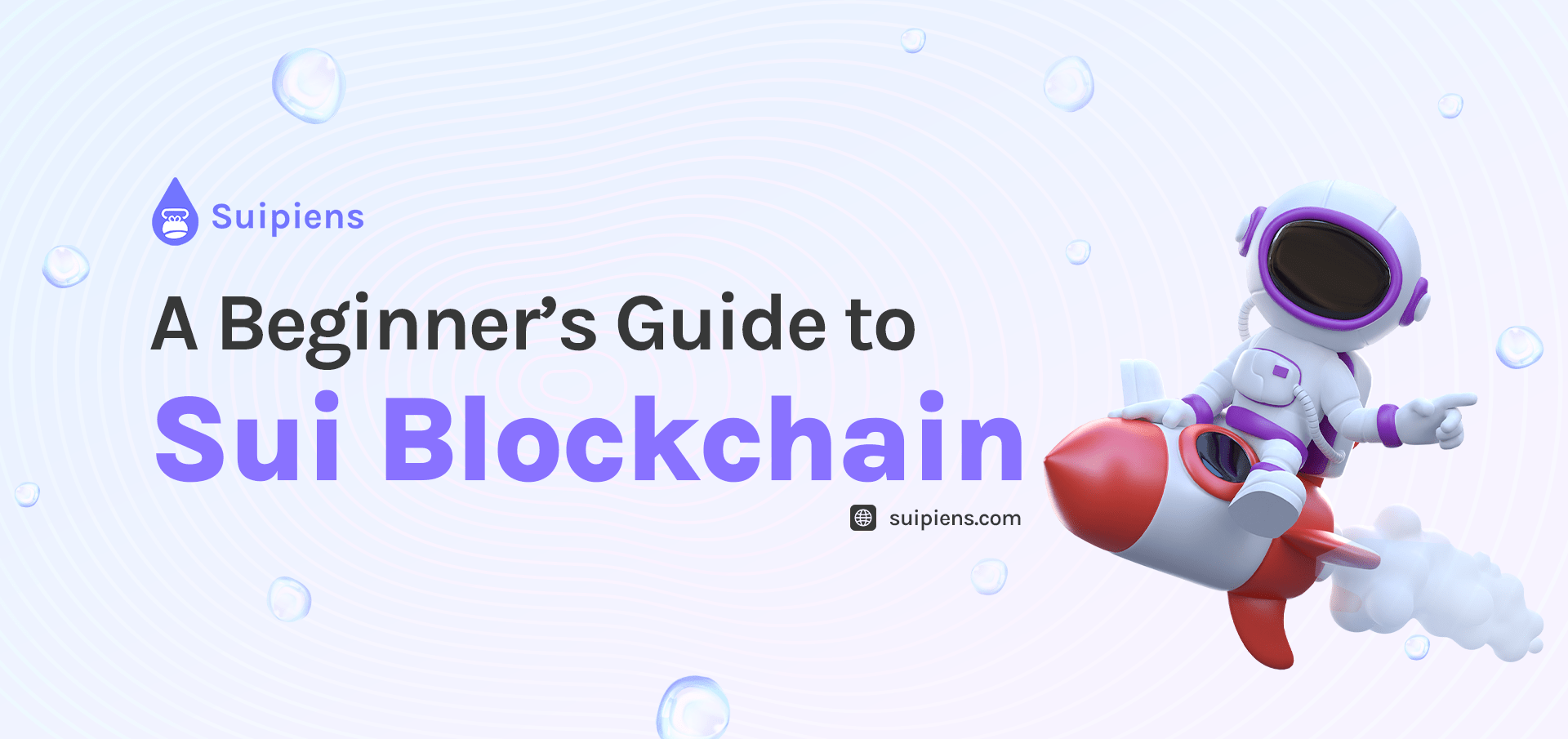
A Beginner's Guide To Sui Blockchain will give you the most up-to-date and detailed information about the Sui Blockchain ecosystem.
Introduction
Although Sui Blockchain is still in its early developmental stages, it has the potential to revolutionize the way businesses operate. This comprehensive guide will provide an introduction to the basics of Sui Blockchain technology and how businesses of all sizes can use it.
In this beginner’s guide to Sui Blockchain, we will discuss what it is, its features, and how you can get started. Sui blockchain is a decentralized platform that enables fast and secure transactions. It also has a unique governance model that ensures all stakeholders are fairly represented. With the Sui blockchain, you can create Dapps and smart contracts with ease. Let's examine this fascinating technology in more detail!
What is Sui Blockchain?
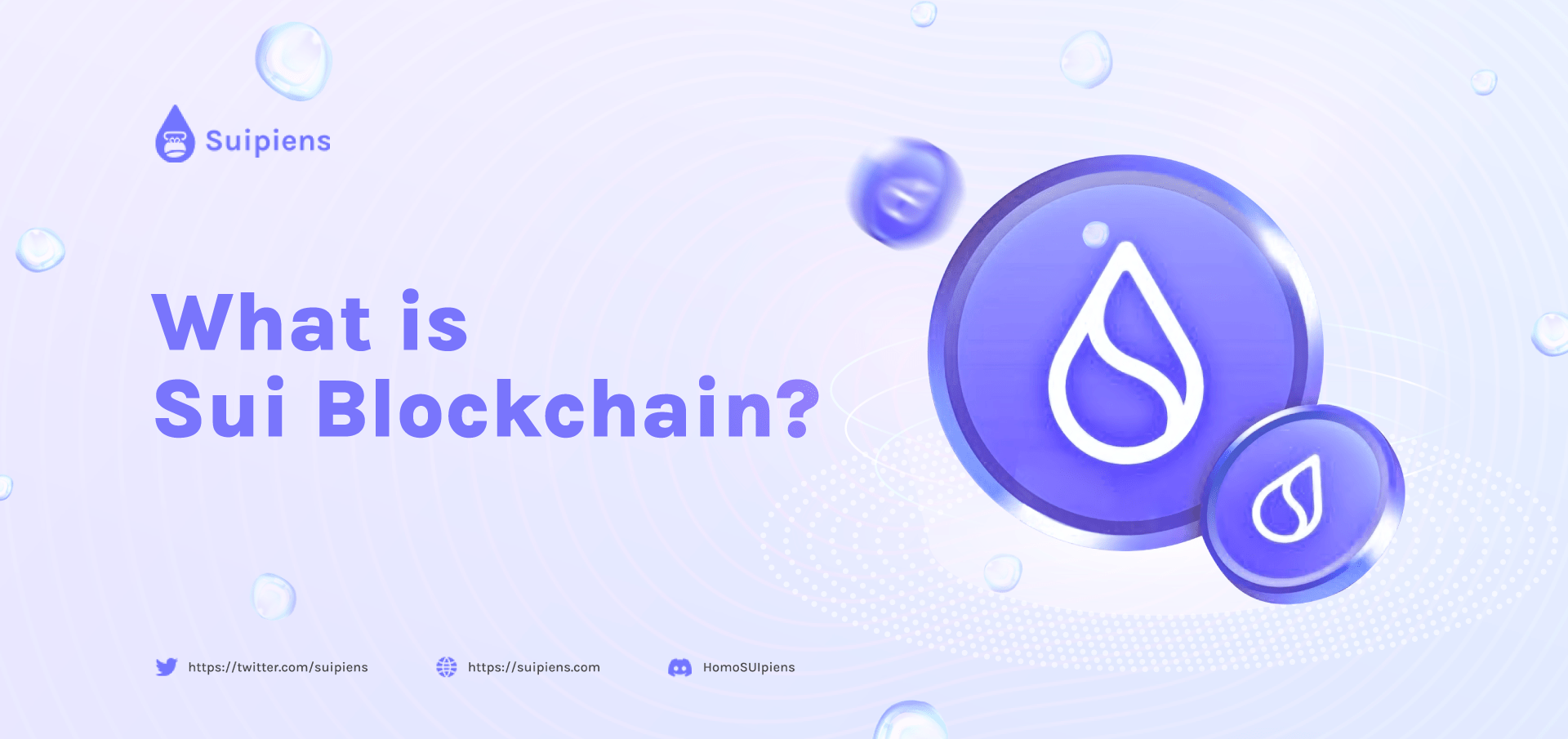
Sui takes pride in being the first permissionless layer-1 (L1) proof-of-stake (PoS) blockchain developed from the ground up, empowering creators and programmers to build Web3 products that serve the impending Web3 user population. This new blockchain is a subsequent-generation smart contract platform that is primarily concerned with throughput and low latency. The asset-oriented programming methodology used by this blockchain is based on the Move smart contract language.
For simple use cases, the platform claims to provide historically low latency and scalability. Due to the platform's support for parallel transactions, this is possible. Sui is able to use processing resources more effectively as a result.
When it comes to straightforward use cases like asset transfers and payment operations, the platform avoids consensus. In opposition to that, it makes use of less complex and low-latency primitives, which is an unheard-of procedure in the blockchain sector according to the documentation. Additionally, this tactic enables developers to create fresh, latency-sensitive Dapps across a variety of industries, from gaming to retail payment!
A permissionless group of validators that perform the same function as miners or validators in other well-known blockchain systems maintains the blockchain platform. Additionally, "SUI" is the name of a platform's native token, which is crucial to the functionality network.
How Does Sui Blockchain Work?
Using a distributed ledger called Sui, a collection of programmable objects with individual IDs is stored. Each object has a specific owner, and each owner may have any number of objects. Byzantine Consistent Broadcast is used by the Sui Validator to approve and carry out transactions concurrently at high throughput.
Sui blockchain achieves scalability and performance by being optimized for straightforward transactions. This is crucial in blockchains and payment systems to prevent duplicate transactions, which, for instance, could lead to the recipient getting the payment twice.
Sui optimizes based on the presumption that each transaction is a user-to-user transaction or asset manipulation. Two categories of assets exist:
- Owned object: Only the individual owner may make changes to it.
- Shared object: Open to multiple users' modifications.
Sui exploits this distinction to get around consensus on owned objects, which reduces transaction latency significantly because the client gets an instant finality confirmation and, in a way, does away with the idea of blocks altogether. The sender can only transmit one transaction at a time, though, as a result of this.
Sui, on the other hand, employs Tusk DAG and BFT consensus, as well as Narwhal-based mem pools, for more intricate transactions involving shared objects.
What Features Make Sui Blockchain Unique?
The Sui Blockchain is a unique platform that offers several features that are not available on other blockchains. These features include:
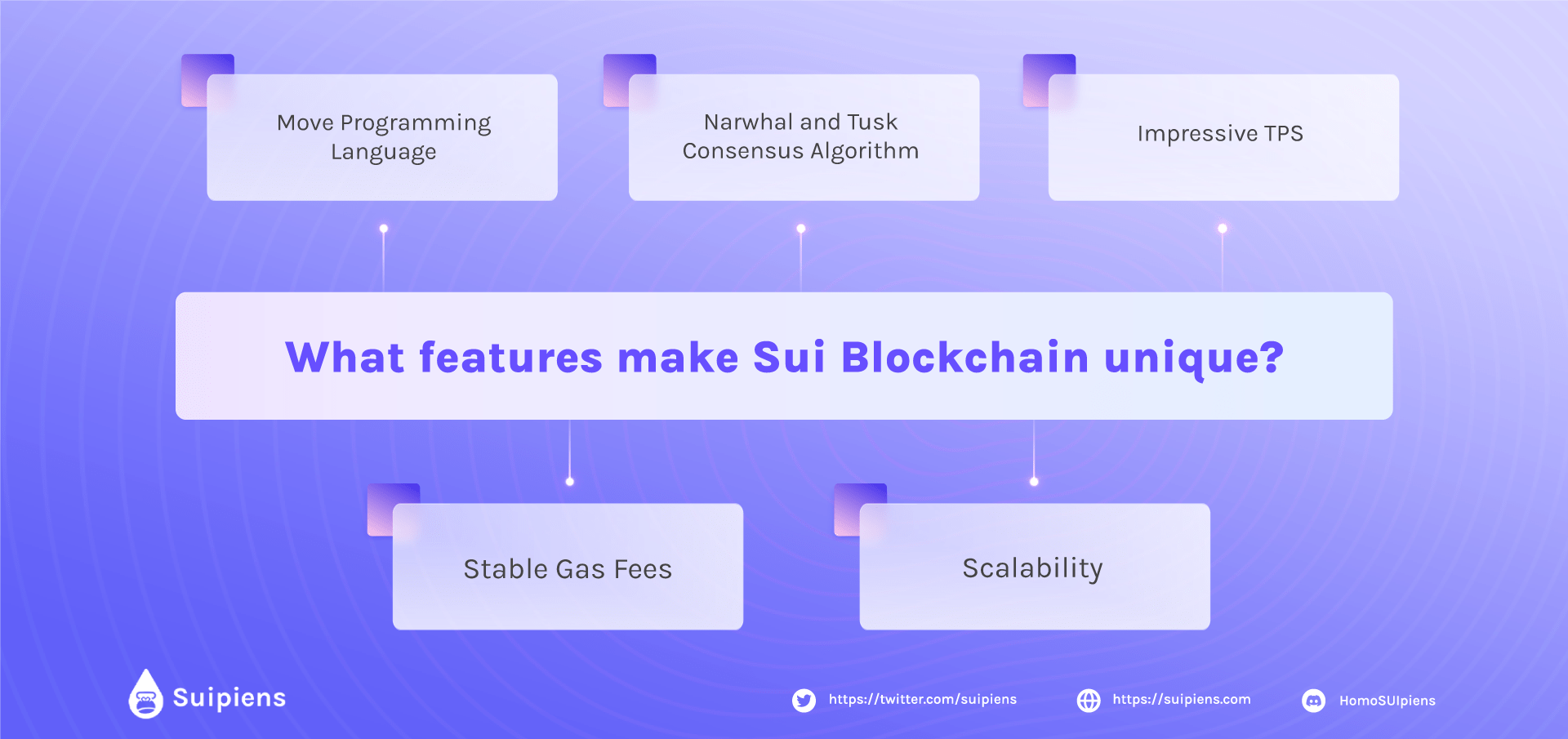
Move Programming Language
Sui also makes use of Move, a brand-new programming language created especially for Diem, as one of the two projects that carry on Diem's legacy. Additionally, Sui creates and employs a slightly different variation of Sui Move.
A few security flaws and attacks have been discovered in Solidity, the programming language used by Ethereum, which has cost Ethereum developers months and thousands of dollars to fix. The Move was created with the intention of creating safe smart contracts.
Move, a framework for memory safety built on top of Solana's Rust language, can give transparency for immutable values and guard against memory data leaks. Move enables users to specify digital asset types into bespoke objects by themselves, rather than keeping assets in contract-locked and hash maps like Solidity (read-only, owned, shared objects).
Narwhal and Tusk Consensus Algorithm
Sui makes use of the Narwhal & Tusk consensus process to guarantee that the network is secure even if the nodes are tricked and compromised. The Sui blockchain's Narwhal & Tusk consensus mechanism separates data transmission from transaction consensus. Consequently, the Mempool problem in conventional blockchain architectures like Ethereum and Bitcoin is resolved.
The consensus mechanism's parallel naming also makes clear two distinct tasks:
- Narwhal: Consensus is achieved by making sure that the data is accessible when submitted
- Tusk: Specify the specific data order.
Narwhal can also be used with other external cryptocurrencies like HotStuff, BFT, or Tendermint because this is accomplished via a layered 2-module paradigm. Aside from Sommelier and Celo, other blockchains have also employed Narwhal.
Impressive TPS
Sui is a blockchain with high throughput and performance. The Sui blockchain was able to achieve a performance of 120,000 TPS, per the results of an experiment. You can appreciate how remarkable SUI Blockchain's TPS is when compared to Solana's 65,000 TPS or even Ethereum's 15 TPS.
Stable Gas Fees
Gas fees on the majority of blockchains today are highly volatile and alter based on market demand. Sui employs gas design in a more optimized manner to maintain low and consistent gas charges. Sui operates in accordance with each epoch's timeframe (each epoch lasts 24 hours), and the validator group on the network will change each epoch. The new validator team will initially vote for a set reference gas price for the whole period.
The protocol then offers validators a small incentive to maintain transaction costs near the reference price during the epoch. Transactions sent to Sui will be processed more predictably if gas prices remain consistent.
Sui is a blockchain that has the ability to linearly scale throughput as additional workers become available, thus validators can raise the number of workers in accordance with the growth in network demand to maintain stable gas prices. The user will have a better experience as a result.
Scalability
Sui's capacity to handle transactions concurrently makes it scalable, which is one of its strong characteristics. Because transactions must be organized and included in a block that is then eventually finalized, the majority of blockchains currently have limited throughput. Sui differs in that they will separate the data into separate objects and process them concurrently.
To carry out transactions, Sui splits asset kinds into objects, of which there are three primary sorts:
- Owned object: Owned by a certain owner and only that owner has the authority to make changes.
- Shared object: Mutable, without a known owner, and able to be used without authorization in many parties' transactions.
- Read-only object: Has no sole owner, cannot be altered after publication, and is available for use in transactions by all users.
Sui utilizes two techniques to obtain consensus in order to process transactions in parallel:
- Byzantine Consistent Broadcast (BCB): For independent transactions, often those involving owned objects and read-only objects, which do not depend on other states on the blockchain.
- Byzantine Fault-Tolerant (BFT) consensus: These transactions will be categorized and handled in sequential order for complicated transactions involving shared objects.
Accordingly, simple transactions won't need consensus; instead, they will be executed independently in parallel. Thus, network latency is decreased, throughput is increased, and Sui is able to scale horizontally and linearly.
What are Sui Blockchain’s Founders
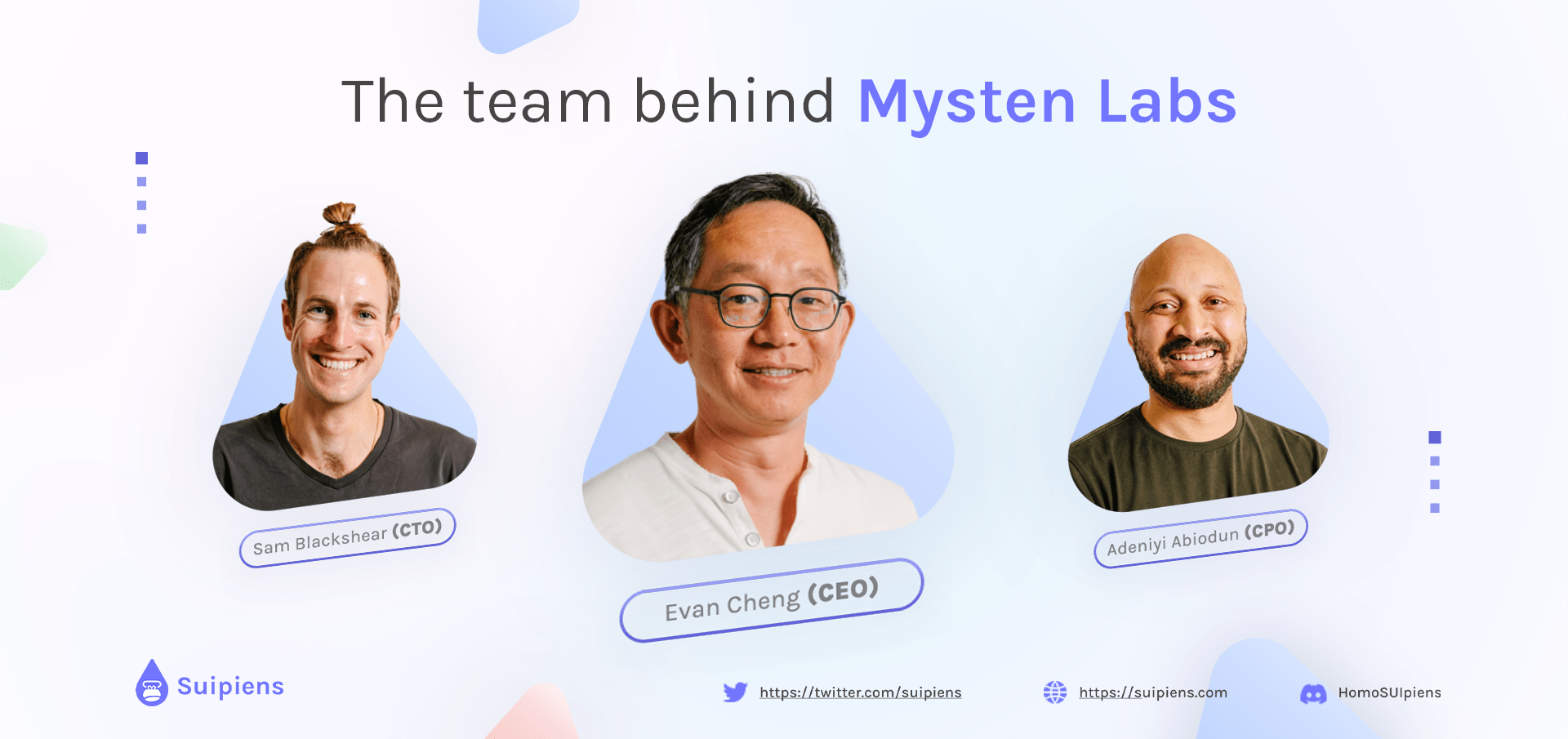
Mysten Labs, the recently established Web3 infrastructure company, is the company that powers Sui Blockchain. Leading expertise in distributed systems, computer languages, and cryptography is gathered at Mysten Labs. The founders of Mysten Labs also oversaw Meta's Novi Research and contributed to the creation of the Move programming language.
What is Sui Token?
Basic information about the $SUI token:
- Token Name: Sui
- Ticker: SUI
- Blockchain: Sui Blockchain
- Token Type: Utility, Governance
- Total Supply: 10.000.000.000 SUI
- Circulating Supply: Updating
$SUI performs the following four primary tasks:
- First, gas fees for transactions and other on-chain operations are paid using SUI tokens.
- Second, the PoS mechanism of the platform can be used with stakes.
- Third, SUI serves as a store of value and an asset, serving as a medium of trade.
- In the end, SUI is crucial to running the Sui blockchain. As a result, token owners are eligible to vote on the blockchain.
The open-source Sui Wallet app has been made available by The Sui Project. Users can currently engage with Dapps on the Sui Devnet, create addresses, examine and manage assets (tokens or NFTs), and use the wallet.
Overview of The Sui Current Ecosystem
Sui's ecosystem is still quite young and has a lot of ongoing projects. Let's look at a few of the projects that have recently surfaced in various industries.
AMM/DEX
The first project in this field is known as MovEX. With Move support, this project will combine AMM and Order Book DEX to function on both Sui and Aptos platforms. However, this project has not yet released any formal items.
Infrastructure
In this segment, there have appeared 2 projects including ChainX and Shinami. Developers on Sui can access API services and node services through the Shinami project. Meanwhile, ChainX is a deployed L2 project for BTC that can expand iBTC to ecosystems by leveraging the Move programming language.
Wallet
In addition to the Sui wallet developed by Mysten Labs itself, the Ethos wallet is another project. This is a Nod Labs project that is being developed on DevNet with early access. Suiet, Hydro Wallet, and Wave Wallet are just a few of the wallets available.
NFTs
This might be regarded as the project's most active development area. Sui has a small number of Collectible projects that are Sui Punks, but Sui also has two NFT Marketplaces that stand out: BlueMove and Sui Gallery. The majority of the inspiration for NFT collection projects comes from large Ethereum and Solana initiatives like CryptoPunks and Moonbirds. The Sui Gallery platform, which enables users to mint NFTs on the Devnet, has begun hosting the first NFT drops among them.
Names Services
A project called Sui Names, SuiNS, and Sui Name Service aims to offer domain names on the Sui Blockchain.
- Sui names: Still in the Devnet stage
- SuiNS, Sui Name Service: despite having a website, the project has not informed the community of any updates.
SocialFi
SocialFi project: Comingchat, Askmex, Peranha.
GameFi
GameFi projects: Final Stardust, Goose Goose Duck, Run Legends, F1 Dog, PLASMAVERSE, COSMOCADIA, Rushdown Revolt.
Security
There are some audit smart contract solutions on the Sui Blockchain: Zokyo, Movebit, and Ottersec.
Sui Blockchain Fundraising Process
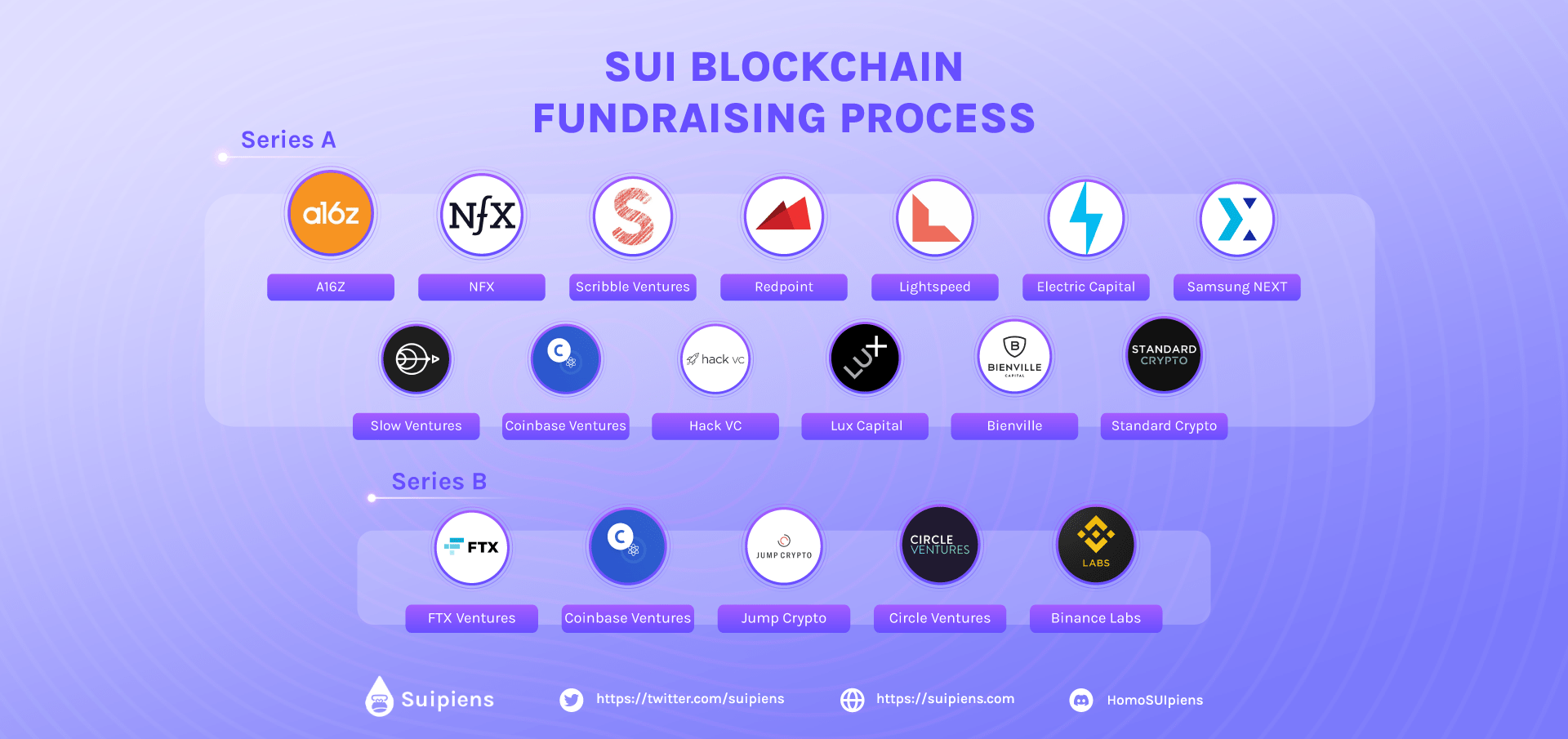
Sui Blockchain's fundraising process was a huge success, raising up to 336 million dollars with the help of a number of well-known backers like FTX Ventures, Binance Labs, and a16z.
Series A
- Announcement date: 6/12/2021
- Amount raised: 36 million USD
- Lead investor: a16z
- Other investors: NFX, Scribble Ventures, Redpoint, Lightspeed Venture Partners, Slow Ventures, Standard Crypto, Electric Capital, Samsung NEXT, Coinbase Ventures…
Series B
- Announcement date: September 8, 2022
- Amount raised: 300 million USD
- Lead investor: FTX Ventures
- Other investors: a16z, Jump Crypto, Apollo, Binance Labs, Franklin Templeton, Coinbase Ventures, Circle Ventures, Dentsu Ventures, Greenoaks Capital, Lightspeed Venture Partners, Sino Global, O’Leary Ventures,…
Sui Blockchain Ecosystem Development Stages
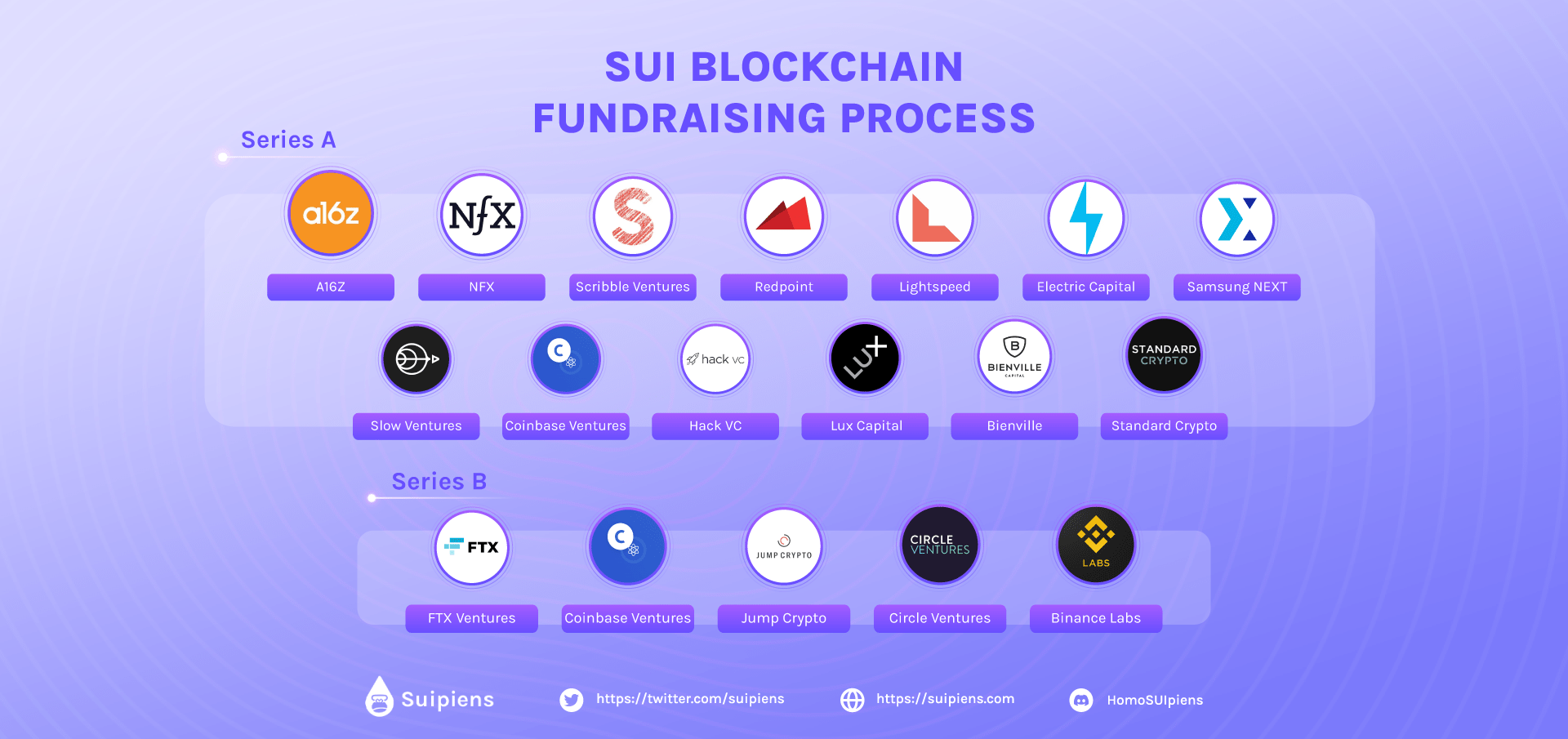
These significant Sui Blockchain-related events took place in 2022.
- Mar 22, 2022: The Sui Blockchain platform's features, concept, and extension form were initially publicly introduced as part of the project's initial official announcement to the community.
- May 06, 2022: The project announced the establishment of DevNet, the platform's initial network. This is a network for developers who are attempting to create goods.
- May 25, 2022: SUI tokenomics was announced along with Sui's economic models, incentives, and token usage. The user, the owner of the SUI token, and the validators are the three main participants.
- June 16, 2022: Users can operate full nodes on DevNet with a license from Mysten Labs. Currently, there are about 5,000 active nodes spread throughout 271 cities and 65 nations.
- July 01, 2022: According to a statement from Sui, the Sui Incentivized Testnet will be unveiled in August of this year. The task of testing the network's features and procedures will involve gradually revealing the Testnet.
- July 19, 2022: Sui launches Sui Wallet, which helps users directly interact with Dapps, generate wallet addresses, and manage assets on the network.
- August 03, 2022: Sui permits registration to take part in the network's validator selection process. Validators can become Mainnet validators in the future and will receive 2,000 SUI for each Testnet wave they participate in if they are chosen.
- November 17, 2022: Mysten Labs announces the start of Sui Testnet Wave 1.
- In the 4th quarter of 2022: By the end of 2022, the Mainnet version is scheduled to be released after the Testnet is stable.
Final Thought
After reading this guide, you should have a good grasp of what the Sui Blockchain is and how it works. You should also know some of the potential applications of blockchain technology as well as some of its limitations. While blockchain is still in its early stages, it has great potential to revolutionize many industries. We will continue to watch the development of blockchain technology and see how it shapes the future.
Be sure to check out Suipiens' website and social media channels to stay up-to-date on all things about Sui Blockchain!

